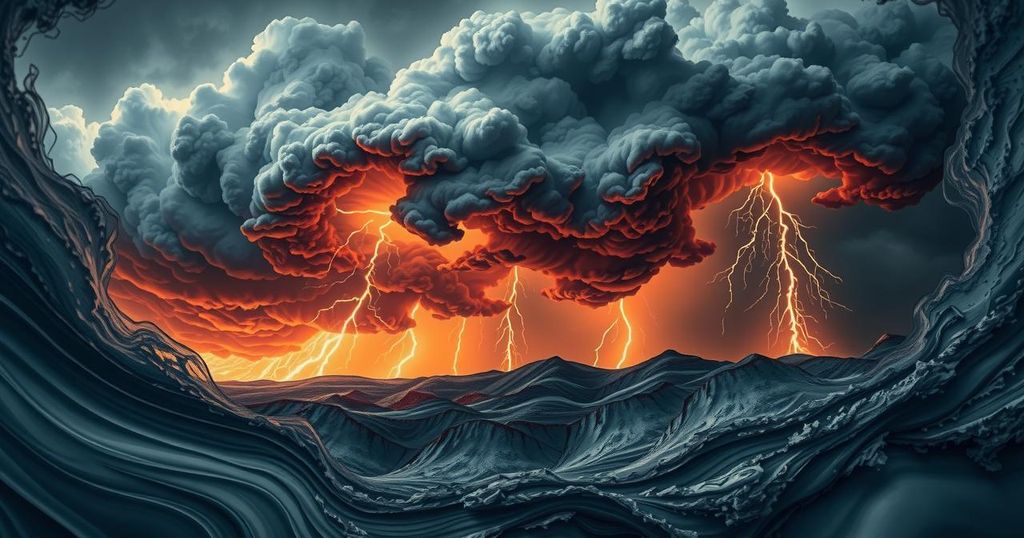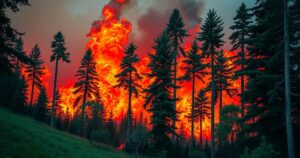Severe Winter Storms Forecasted to Impact U.S. Regions with Multiple Hazards

A series of winter storms is set to impact numerous regions across the United States, bringing snow, ice, and heavy rainfall. The first storm will begin affecting parts of the Midwest and East Coast early this week, followed by two additional storms causing further significant weather disruptions, including flooding risks in California and power outages in affected areas.
The United States is facing a series of winter storms that have recently intensified, affecting nearly every region with significant weather hazards. The initial storms brought snow and ice to the northern and eastern states, while heavy rainfall impacted California. This week, three new storms are anticipated, with the first two arriving in quick succession, creating a continuous storm effect.
Storm one is forecasted to develop in the Plains on Monday night and reach the East Coast by Tuesday. Unlike the previous storms, this system will target more southern regions, delivering snow and freezing rain to areas previously untouched by winter conditions. The Appalachians and mid-Atlantic are expected to experience the most significant ice accumulation, potentially exceeding 0.25 inches, which could cause power outages and treacherous travel conditions.
As the storm progresses into Tuesday evening, significant snowfall is expected in Washington, D.C., with potential accumulations of up to 6 inches. This snowfall adds to a winter total that has already matched the totals of the past two winters combined. Additional snowfall is also projected in parts of Pennsylvania, New Jersey, and southern New England, with New York City anticipating one to two inches.
Simultaneously, heavy rainfall will pose flooding risks across the southern states, especially in areas recovering from Hurricane Helene. A level 2 risk of flooding has been issued from Texas to the Carolinas. Kansas Governor Laura Kelly has declared a state of disaster due to the impending storms, urging residents to prepare an emergency kit and proceed with caution.
Storm two is expected to unfold on Wednesday and Thursday. This storm will develop while the first storm is still active, bringing snow, ice, and rain to the central U.S. By Thursday morning, the storm will dominate the East Coast, producing heavy snowfall in the Plains and Midwest. Areas like Kansas City and Chicago may see snowfall nearing double digits.
Once again, ice accumulation will complicate travel, particularly in states just south of where the heaviest snow falls. The Appalachians are anticipated to receive a second wave of ice, creating ongoing difficulties for those who were already impacted by the first storm.
The third storm will hit California first on Thursday, presenting a significant risk of flooding, especially in regions affected by recent wildfires. Authorities have warned of potential life-threatening debris flows in burn areas, prompting preemptive measures such as cleaning debris basins and installing sandbags. Heavy rainfall and snow are expected throughout California, with the storm tracking eastward by Thursday night.
By Saturday, the storm system will have expanded significantly, impacting the Midwest and advancing towards the Northeast by the evening. Severe thunderstorms may develop, particularly in the southern regions, following a pattern already seen last week. The series of storms is expected to persist into the following week with additional weather developments on the horizon.
In summary, an intense series of winter storms is set to impact a broad swath of the United States, with significant snow, ice, and rainfall expected. The first storm is already threatening dangerous conditions, particularly in the Appalachian region, where ice accumulation could lead to power outages. California will face a heightened risk of flooding due to a storm that follows closely, especially affecting areas previously ravaged by wildfires. Authorities urge residents to remain vigilant and prepared for potential emergencies.
Original Source: www.kten.com







